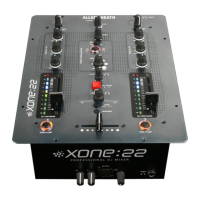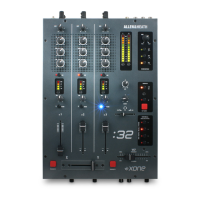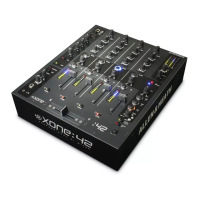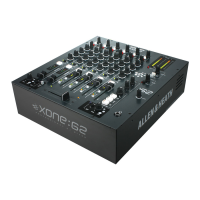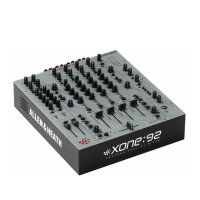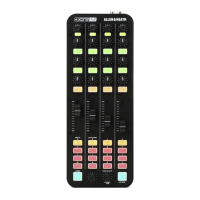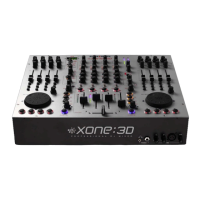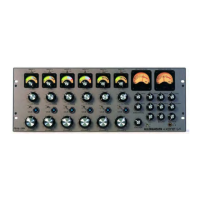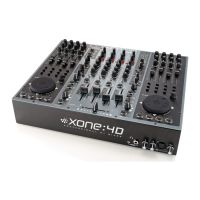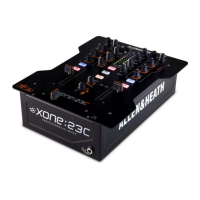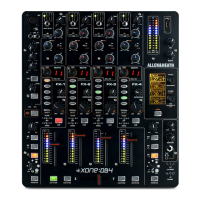12 XONE:02 User Guide
Operating Instructions
The QUICK START page near the beginning of this user guide gives you a quick introduction to using
the XONE:02 if you want to get going right away. You can achieve much simply by experimenting and
trying out different combinations of settings. The notes here provide further information to get the most
out of your console. It is not intended as a guide to how to mix or structure your performance. That is
your art…
Overview of the Application
This diagram shows an example hook-up to demonstrate how the XONE:02 can be connected in a
typical DJ application. Note that the connector types on the equipment you connect to may be different
to that shown. Use cables appropriate to your application. Please read the INSTALLATION section
before connecting to your equipment. The following describes this example application:
DJ Microphone and Headphones: The DJ plugs in the preferred headphones and microphone. A
second mic for the MC may also be required. The console cue system works with the headphones to
let the DJ cue tracks and preview the mix before going live.
Mix music sources: Two dual input channels are used for the mix music sources. Here, both a
turntable and a CD deck are plugged into each, one for each side of the crossfader. The turntable
magnetic cartridges plug into the RIAA equipped phono inputs, the CD into the line inputs. This gives
the DJ the choice of vinyl or CD mixing. Alternatively, the DJ could plug other sources such as a drum
machine into the line input.
Adding effects: The stereo effects send is used to route the channel to an external effects unit such
as a sampler or echo device. Its output is returned to the mix through the Effects return. This is known
as an ‘effects loop’. The effects unit can be switched in or out of each music channel and the mic
channel independently. Adding effects in this way greatly enhances the performance of the DJ helping
create a unique interpretation of the music.
Mix output: This stereo output feeds the house PA system to provide quality sound to the dance floor.
The connections are balanced to feed long cable runs to the amplifier system. They may plug into
system processors such as protection limiters, EQ and crossovers which connect to the amplifiers.
Booth monitor: A stereo speaker system provides the DJ with a local monitor. This has its own level
control so it can be adjusted to suit without affecting the house sound.
Recording the mix: Alternatively, the booth feed could be connected to a recorder such as the
MiniDisc shown to record the DJ’s set, or to both using a Y-adapter.
Linking consoles: The output of one XONE:02 can be linked into the input of another. This is
convenient for battle mixing where several DJs may be mixing together into the same system, each with
their own console.
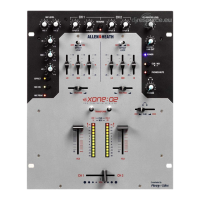
